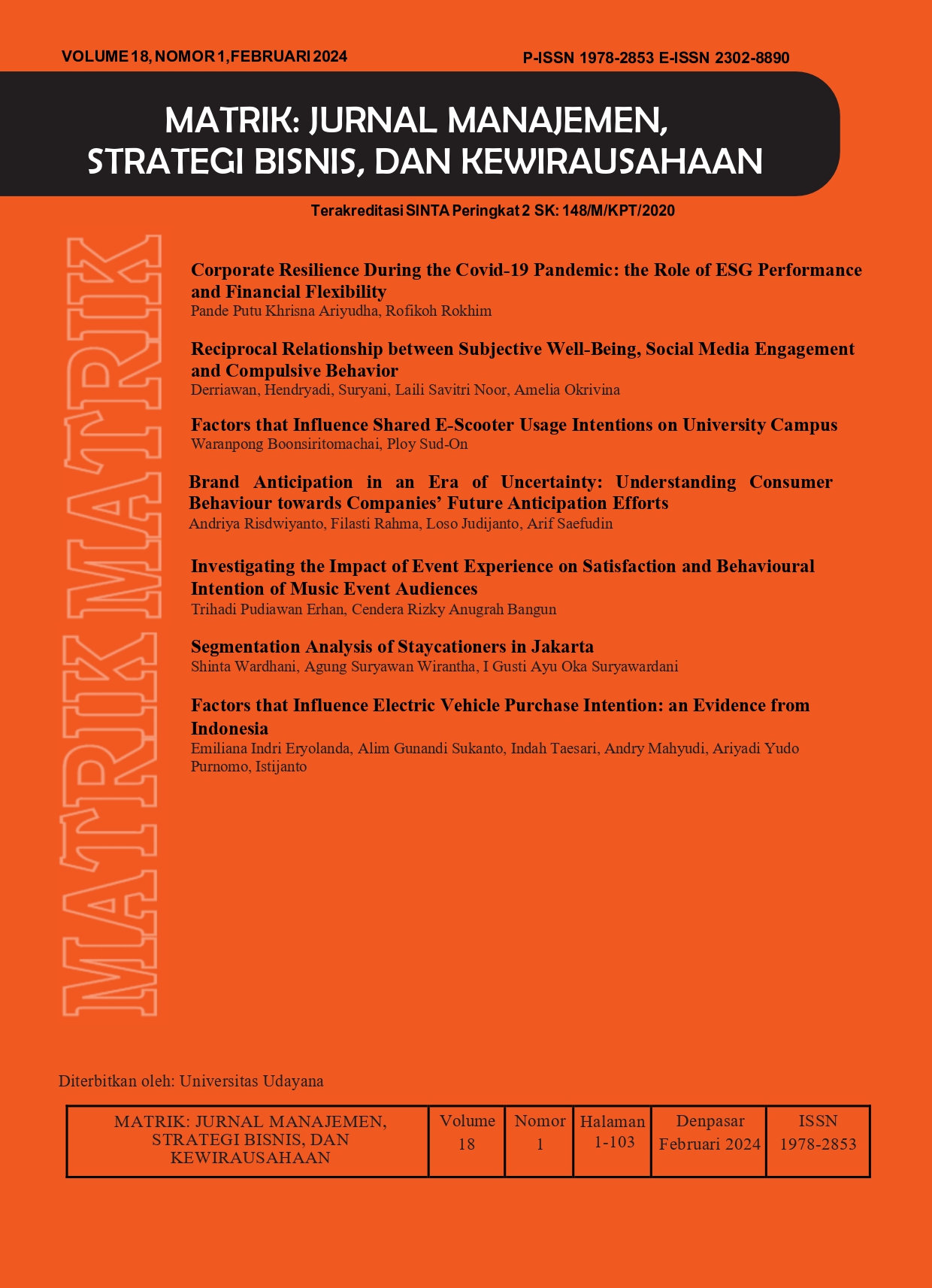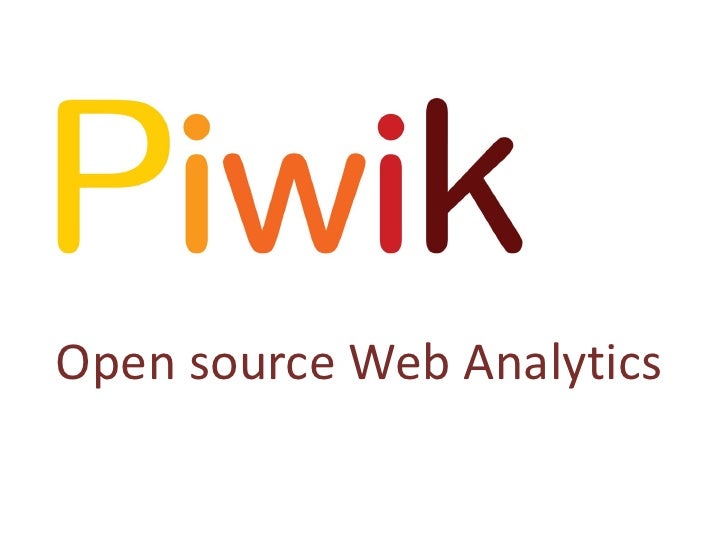Investigating the Impact of Event Experience on Satisfaction and Behavioural Intention of Music Event Audiences
Abstract
Many music events, be it concerts or festivals, are being held worldwide, and Indonesia is one of them. Motivation to attend a music festival is an experience that is a balance between fun, self-reflection, and impact. Our objective is to investigate how event experience helps shape satisfaction and, in turn, leads to future behavioural intention. This study uses Partial Least Squares regression to investigate six hypotheses. A total of 206 individuals in Indonesia who attended concerts in the past six months were surveyed, with 150 valid responses, giving a 72.8% response rate. The result shows that event experiences that are escapism, entertainment, and esthetic factors positively affect consumer satisfaction among music festivals and concert attendees, with the exception of education. Furthermore, consumer satisfaction significantly increases the tendency to both recommend and revisit. Thus, this study shows that event organizers need to create a memorable experience to gain favourable behavioural intention.
Keyword: behavioral intention; customer satisfaction; event experience; music event
Downloads
References
Aşan, K., Kaptangil, K., & Gargacı Kınay, A. (2020). Mediating role of perceived festival value in the relationship between experiences and satisfaction. International Journal of Event and Festival Management, 11(2), 255–271.
Baker, A. J. (2016). Music scenes and self branding (Nashville and Austin). Journal of Popular Music Studies, 28(3), 334–355.
Bangun, C. R. (2019). Participatory culture: a study on Bangtan Boys fandom Indonesia. KOMUNIKA: Jurnal Dakwah Dan Komunikasi, 13(2).
Bangun, C. R., Kumaralalita, N., & Sukur, G. F. F. (2020). Studying fandom online: A case study of Twice and Stray Kids fandom on fan fiction practices of@ Eskalokal and@ Gabenertwice on Twitter. Aspiration Journal, 1(2), 211–231.
Berridge, G. (2020). Designing event experiences. In The Routledge handbook of events (pp. 378–395). Routledge.
Bhandari, U., Chang, K., & Neben, T. (2019). Understanding the impact of perceived visual aesthetics on user evaluations: An emotional perspective. Information & Management, 56(1), 85–93.
Buswell, J., Williams, C., Donne, K., & Sutton, C. (2016). Service quality in leisure, events, tourism and sport. CABI.
Cohen, J. (2013). Statistical power analysis for the behavioral sciences. Academic press.
Collis, C. (2017). What is entertainment? The value of industry definitions. Entertainment Values: How Do We Assess Entertainment and Why Does It Matter?, 11–22.
De Nisco, A., Papadopoulos, N., & Elliot, S. (2017). From international travelling consumer to place ambassador: Connecting place image to tourism satisfaction and post-visit intentions. International Marketing Review, 34(3), 425–443.
Dearn, L. K., & Price, S. M. (2016). Sharing music: Social and communal aspects of concert-going. Networking Knowledge: Journal of the MeCCSA Postgraduate Network, 9(2).
Dobson, M. C. (2010). New audiences for classical music: The experiences of non-attenders at live orchestral concerts. Journal of New Music Research, 39(2), 111–124.
Dolasinski, M. J., Roberts, C., Reynolds, J., & Johanson, M. (2021). Defining the field of events. Journal of Hospitality & Tourism Research, 45(3), 553–572.
Duffy, M., & Mair, J. (2018). Engaging the senses to explore community events. Event Management, 22(1), 49–63.
Edensor, T. (2015). Light design and atmosphere. Visual Communication, 14(3), 331–350.
Fornell, C., & Larcker, D. F. (1981). Evaluating structural equation models with unobservable variables and measurement error. Journal of Marketing Research, 18(1), 39–50.
Garrido, S., Davidson, J., & Odell-Miller, H. (2013). Music and mood regulation: A historical enquiry into individual differences and musical prescriptions through the ages. Australian Journal of Music Therapy, 24, 89–112.
Garrido, S., & Schubert, E. (2011). Individual differences in the enjoyment of negative emotion in music: A literature review and experiment. Music Perception, 28(3), 279–296.
Garrod, B., & Dowell, D. (2020). Experiential marketing of an underground tourist attraction. Tourism and Hospitality.
Gelder, G., & Robinson, P. (2009). A critical comparative study of visitor motivations for attending music festivals: A case study of Glastonbury and V Festival. Event Management, 13(3), 181–196.
Grappi, S., & Montanari, F. (2011). The role of social identification and hedonism in affecting tourist re-patronizing behaviours: The case of an Italian festival. Tourism Management, 32(5), 1128–1140.
Hair, J. F., Black, W. C., Babin, B. J., & Anderson, R. E. (2009). Multivariate Data Analysis 7th Edition Pearson Prentice Hall. JOUR.
Hair, J. F., Ringle, C. M., & Sarstedt, M. (2011). PLS-SEM: Indeed a silver bullet. Journal of Marketing Theory and Practice, 19(2), 139–152.
Hair Jr, J., Hair Jr, J. F., Hult, G. T. M., Ringle, C. M., & Sarstedt, M. (2021). A primer on partial least squares structural equation modeling (PLS-SEM). Sage publications.
Henseler, J., Ringle, C. M., & Sarstedt, M. (2015). A new criterion for assessing discriminant validity in variance-based structural equation modeling. Journal of the Academy of Marketing Science, 43, 115–135.
Hirschman, E. C., & Holbrook, M. B. (1982). Hedonic consumption: emerging concepts, methods and propositions. Journal of Marketing, 46(3), 92–101.
Hooshmand, R., Sung, B., Jefferies, K., Jefferies, R., & Lin, J. (2023). The impact of COVID-19 on regional event attendees’ attitudes: a survey during and after COVID-19 lockdowns. International Journal of Event and Festival Management, 14(1), 73–91.
Hwang, R., & Lee, M. (2022). The influence of music content marketing on user satisfaction and intention to use in the metaverse: A focus on the SPICE model. Businesses, 2(2), 141–155.
Japutra, A., Loureiro, S. M. C., & Wang, S. (2021). The role of personal values and personality traits on intention to recommend a destination. Tourism Analysis, 26(4), 349–361.
Karim, A. K. M. R., Proulx, M. J., de Sousa, A. A., & Likova, L. T. (2022). Do we enjoy what we sense and perceive? A dissociation between aesthetic appreciation and basic perception of environmental objects or events. Cognitive, Affective, & Behavioral Neuroscience, 22(5), 904–951.
Komarac, T., & Ozretić Došen, Đ. (2022). Discovering the determinants of museum visitors’ immersion into experience: The impact of interactivity, expectations, and skepticism. Current Issues in Tourism, 25(22), 3675–3693.
Llopis-Amorós, M.-P., Gil-Saura, I., Ruiz-Molina, M. E., & Fuentes-Blasco, M. (2019). Social media communications and festival brand equity: Millennials vs Centennials. Journal of Hospitality and Tourism Management, 40, 134–144.
Lonsdale, A. J., & North, A. C. (2011). Why do we listen to music? A uses and gratifications analysis. British Journal of Psychology, 102(1), 108–134.
Luo, Q., Hu, S., & Guo, Y. (2022). ‘Right here, right now!’: embodied experiences of pop concert participants. Current Issues in Tourism, 25(17), 2838–2853.
Mainolfi, G., & Marino, V. (2020). Destination beliefs, event satisfaction and post-visit product receptivity in event marketing. Results from a tourism experience. Journal of Business Research, 116, 699–710.
Malhotra, N. K. (2020). Marketing research: an applied orientation, Seventh Edition (Global Edition). Pearson.
Marshall, H., Johnson, J., & Brown, A. E. (2023). Going alone: the experience of solo eventgoers at music events in the UK. Event Management.
Mason, M. C., & Paggiaro, A. (2012). Investigating the role of festivalscape in culinary tourism: The case of food and wine events. Tourism Management, 33(6), 1329–1336.
Meeprom, S., & Silanoi, T. (2020). Investigating the perceived quality of a special event and its influence on perceived value and behavioural intentions in a special event in Thailand. International Journal of Event and Festival Management, 11(3), 337–355.
Minor, M. S., Wagner, T., Brewerton, F. J., & Hausman, A. (2004). Rock on! An elementary model of customer satisfaction with musical performances. Journal of Services Marketing, 18(1), 7–18.
Morgan, M. (2008). What makes a good festival? Understanding the event experience. Event Management, 12(2), 81–93.
Nguyen, T., Lee, K., Chung, N., & Koo, C. (2020). The way of generation Y enjoying Jazz festival: A case of the Korea (Jarasum) music festival. Asia Pacific Journal of Tourism Research, 25(1), 52–63.
Oklevik, O., Kwiatkowski, G., Preuss, H., & Kurdyś-Kujawska, A. (2022). Contextual engagement in event visitors’ experience and satisfaction. Scandinavian Journal of Hospitality and Tourism, 22(1), 58–79.
Pine, B. J., & Gilmore, J. H. (1998). Welcome to the experience economy (Vol. 76, Issue 4). Harvard Business Review Press Cambridge, MA, USA.
Pitts, S. (2016). Valuing musical participation. Routledge.
Pizzolitto, E. (2023). Music in business and management studies: a systematic literature review and research agenda. Management Review Quarterly, 1–34.
Quadri-Felitti, D. L., & Fiore, A. M. (2013). Destination loyalty: Effects of wine tourists’ experiences, memories, and satisfaction on intentions. Tourism and Hospitality Research, 13(1), 47–62.
Saarikallio, S. H. (2008). Music in mood regulation: Initial scale development. Musicae Scientiae, 12(2), 291–309.
Saragih, H. S., & Amelia, N. (2020). Segmentation of music festival visitors by values of hedonia, life satisfaction and eudaimonia. International Journal of Event and Festival Management, 11(4), 453–472.
Sisson, A. D., & Alcorn, M. R. (2022). How was your music festival experience? Impacts on loyalty, word-of-mouth, and sustainability behaviors. Event Management, 26(3), 565–585.
Skirkowski, J. (2022, November 7). It’s Not Just Glasto – Festivals in 2023 Will Be Pricier Than Ever. Vice. https://www.vice.com/en/article/jgpk98/music-festivals-more-expensive-than-ever-2023
Strand, A., & Robertson, M. (2020). An attitudinal impacts analysis of social media platforms and brand relationship quality at music festivals. Event Management, 24(6), 769–788.
Tan, K.-L., Ho, J.-M., Sim, A. K. S., Dubos, L., & Cham, T.-H. (2023). Unlocking the secrets of Miri country music festival in Malaysia: a moderated-mediation model examining the power of FOMO, flow and festival satisfaction in driving revisiting intentions. Asia Pacific Journal of Tourism Research, 28(5), 416–432.
Torres, E. N., Wei, W., Hua, N., & Chen, P.-J. (2019). Customer emotions minute by minute: How guests experience different emotions within the same service environment. International Journal of Hospitality Management, 77, 128–138.
Tung Au, W., Ho, G., & Wing Chuen Chan, K. (2017). An empirical investigation of the arts audience experience index. Empirical Studies of the Arts, 35(1), 27–46.
Vogel, H. L. (2020). Entertainment industry economics: A guide for financial analysis. Cambridge University Press.
Vuoskoski, J. K., & Eerola, T. (2017). The pleasure evoked by sad music is mediated by feelings of being moved. Frontiers in Psychology, 8, 439.
Wei, W., & Miao, L. (2017). Memorable experiences in customer–customer interactions (CCIs) at conferences. Event Management, 21(6), 771–787.
Wood, E. H., & Kinnunen, M. (2020). Emotion, memory and re-collective value: shared festival experiences. International Journal of Contemporary Hospitality Management, 32(3), 1275–1298.
Wu, H.-C., Cheng, C.-C., & Ai, C.-H. (2018). A study of experiential quality, experiential value, trust, corporate reputation, experiential satisfaction and behavioral intentions for cruise tourists: The case of Hong Kong. Tourism Management, 66, 200–220.
Wu, R., Han, Y., & Chen, S. (2024). Awe or excitement? The interaction effects of image emotion and scenic spot type on the perception of helpfulness. Journal of Hospitality and Tourism Management, 58, 76–84.
Yuksel, A., Yuksel, F., & Bilim, Y. (2010). Destination attachment: Effects on customer satisfaction and cognitive, affective and conative loyalty. Tourism Management, 31(2), 274–284.
Yürük, P., Akyol, A., & Şimşek, G. G. (2017). Analyzing the effects of social impacts of events on satisfaction and loyalty. Tourism Management, 60, 367–378.
Zeithaml, V. A., Berry, L. L., & Parasuraman, A. (1996). The behavioral consequences of service quality. Journal of Marketing, 60(2), 31–46.
 This work is licensed under a Creative Commons Attribution-ShareAlike 4.0 International License.
This work is licensed under a Creative Commons Attribution-ShareAlike 4.0 International License.

















